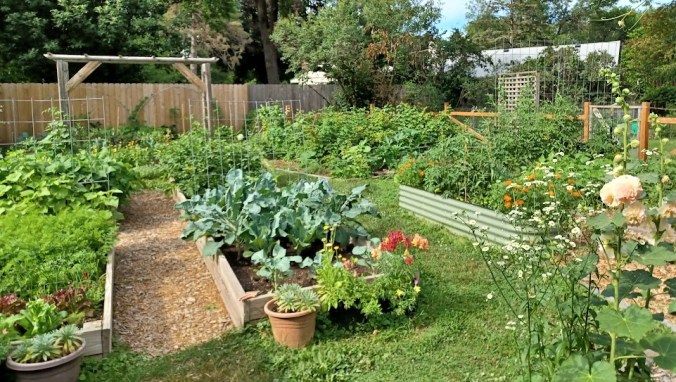In recent years, the art of natural dyeing with plants has garnered attention among environmentally conscious individuals, particularly those embracing the homesteading lifestyle. This ancient craft not only brings vibrant colors to fabrics but also promotes sustainable living practices. By understanding the process of natural dyeing with plants, homesteaders can add a personal touch to their textiles while reducing their carbon footprint.

What is Natural Dyeing?
Natural dyeing involves using plant-based materials to color textiles. Unlike synthetic dyes, which often contain harmful chemicals, natural dyes are derived from roots, leaves, bark, and flowers. This method is not only eco-friendly but also allows for a unique, organic look that cannot be replicated with artificial dyes.
Why Choose Plant-Based Dyes?
The growing interest in sustainable living has led many to explore plant-based dyes. These dyes are biodegradable and non-toxic, making them safe for both the environment and the user. Additionally, the use of natural dyes supports biodiversity, as it encourages the cultivation of dye plants.
For those interested in homesteading, incorporating natural dyeing can be an exciting project. It complements other homestead activities such as yogurt making and rainwater collection, creating a more self-sufficient lifestyle.
The History of Natural Dyeing
The tradition of dyeing fabrics with natural ingredients dates back thousands of years. Ancient civilizations across the globe, from the Egyptians to the Mayans, used plant materials to color their garments. This age-old practice has stood the test of time, offering a valuable connection to our ancestors.
How to Get Started with Natural Dyeing
Getting started with natural dyeing with plants requires some basic materials and knowledge. Here’s a step-by-step guide to help you embark on this colorful journey:
1. Gather Your Materials
- Textiles: Choose natural fibers like cotton, wool, or silk for best results.
- Plants: Identify plants that are suitable for dyeing, such as onion skins, marigold flowers, and indigo leaves.
- Mordants: Mordants are substances that help the dye bind to the fabric. Common mordants include alum and iron.
- Equipment: Basic equipment includes pots, spoons, and gloves.
2. Prepare the Fabric
Before dyeing, it’s essential to prepare the fabric. Wash it thoroughly to remove any impurities and soak it in a mordant solution to ensure the dye adheres properly.
3. Extract the Dye
Extracting dye from plants involves simmering the plant material in water. The resulting liquid is your dye bath. The length of time and temperature will vary depending on the plant used.
4. Dye the Fabric
Once the dye bath is ready, immerse the prepared fabric in it. Keep the fabric in the dye bath until the desired color is achieved. Remember, colors may appear different when wet, so allow the fabric to dry to see the true shade.
5. Rinse and Dry
After dyeing, rinse the fabric in cold water until the water runs clear. Hang it to dry away from direct sunlight to preserve the color.
Popular Plants for Natural Dyeing
Various plants offer an array of colors, each bringing its own unique hue to textiles:
- Onion Skins: Yield shades of yellow and orange.
- Indigo: Produces deep blues.
- Hibiscus Flowers: Result in pinks and reds.
- Walnut Hulls: Provide rich browns.
- Marigold Flowers: Offer vibrant yellows.
Benefits of Natural Dyeing
Natural dyeing is not only a sustainable practice but also offers numerous benefits:
- Eco-Friendly: Reduces reliance on synthetic chemicals.
- Unique Results: Each dye batch produces one-of-a-kind results.
- Cost-Effective: Utilize readily available plants, often at no cost.
Challenges and Solutions
While natural dyeing offers many advantages, it does come with challenges:
- Color Fastness: Natural dyes can fade over time. Solution: Use mordants properly and avoid prolonged exposure to sunlight.
- Color Consistency: Achieving consistent colors can be tricky. Solution: Keep detailed notes on your dyeing process.
Integrating Natural Dyeing into Homesteading
Natural dyeing is a perfect addition to the homestead. It complements activities like reducing waste and encourages a more holistic approach to living.
For more tips on starting your homesteading journey, check out this guide to homesteading.

Frequently Asked Questions
1. Is natural dyeing safe?
Yes, natural dyeing is generally safe as it uses non-toxic plant materials. However, it’s essential to handle mordants carefully and follow safety guidelines.
2. Can I dye synthetic fabrics with natural dyes?
Natural dyes work best on natural fibers like cotton and wool. Synthetic fabrics do not absorb the dye as well and may result in less vibrant colors.
3. How do I ensure my natural dyes do not fade?
To prevent fading, properly use mordants and store dyed fabrics away from direct sunlight. Additionally, wash them gently in cold water.
By embracing natural dyeing with plants, homesteaders can enhance their self-sufficiency while enjoying the beauty and creativity of this timeless craft. Whether you’re dyeing fabrics for personal use or sharing them with others, the journey of natural dyeing is both rewarding and sustainable.





